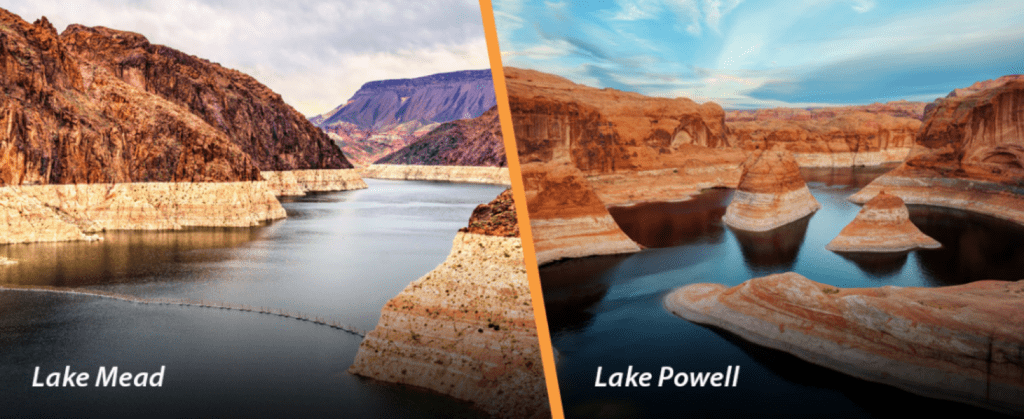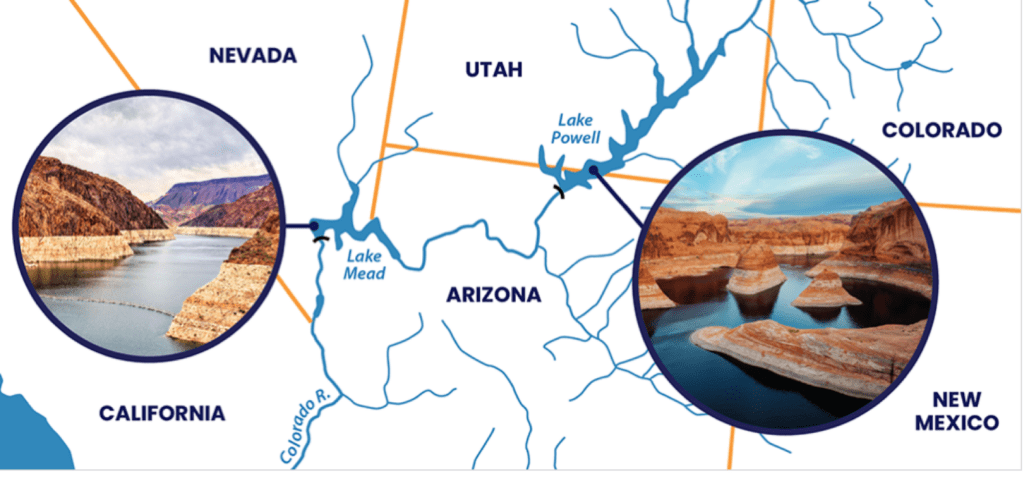Daniel Salzler No. 1067
EnviroInsight.org 5 Items September 11, 2020
—————Feel Free To Pass This Along To Others——————
If your watershed is doing something you would like others to know about, or you know of something others can benefit from, let me know and I will place it in this Information newsletter.
If you want to be removed from the distribution list, please let me know. Please note that all meetings listed are open.
Enhance your viewing by downloading the pdf file to view photos, etc. The attached is all about improving life in the watershed.
This is already posted at the NEW EnviroInsight.org
1. Growing Food From Your Kitchen Scraps. Grow your own garlic, lettuce, and celery.
Garlic, lettuce, and celery are three of the easiest foods to grow from food scraps indoors. The next time you see cloves of garlic sprouting green stems, plant the cloves (not the whole head), unpeeled and with the sprouts facing up, two inches deep and four to six inches apart in a pot of soil. Place them in a sunny spot and keep the soil moist. Snip the sprouts and eat them for a garlic-like flavor.

Don’t have soil? Try growing lettuce or celery! Take one bunch of either vegetable chop three three inches from the bottom. Put the bottom in an inch of water and set it under bright, indirect light. Change the water every few days. Slice off new stalks and munch away. You can compost any rotting parts.
Want to cut down on plastic waste? Avoid soil sold in plastic bags by bringing a bucket to nurseries that sell soil in bulk. Ask if they sell veganic fertilizer, which means it’s free of blood and bones from animals. You can learn more about veganic farming at veganic.world.
For tips on how to grow other produce from scraps, indoors or outdoors, pick up a copy of Kati Elzer-Peters’s No-Waste Kitchen Gardening.
2. Arizona Announces New Salt River Revitalization Project. TUCSON (KVOA) – The Rio Reimagined Project, Salt River revitalization project, is the 20th Urban Waters Federal Partnership location.
The project will transform 58 miles along the Salt-Gila river corridor, which will benefit six cities and two Native American tribes.
Federal, local and tribal partners made the announcement on Tuesday. They will work together to develop the area.
“The Rio Reimagined project will bring new life to the Salt and Gila Rivers by transforming underutilized areas and creating sustainable outdoor spaces for Arizonans to enjoy,” Senator Martha McSally said. “Not only will it restore our river’s ecosystems, but it will also bring economic growth to the Phoenix metro area. Last year, I asked Administrator Andrew Wheeler to include Rio Reimagined in the unique Urban Waters Federal Partnership and I’m grateful he did. It was Senator John McCain who fiercely championed this plan after it had fallen to the wayside, and it is thanks to him that Rio Reimagined is finally becoming a reality.”
The federal designation allows for more federal funds to be available for the project.
3. Upper Agua Watershed Partnership to meet 10 am, October 6, 2020 at
Mingus Springs.
Place it on your calendar. Henry Dahlberg has invited us to meet at the headwaters of Ash Creek at his house since we missed our annual June meeting there. We will observe social distancing, please bring your mask. Originally we planned a gotomeeting September 15, but Henry’s invitation is irresistible!
Agenda and directions to follow. Source Mary at [email protected]
4. Explore Stormwater Best Management Practices with APW As part of developing online resources for K-12 teachers, Arizona Project WET created a new YouTube video to take viewers on an adventure throughout the University of Arizona and around Tucson to discover some Best Management Practices (BMPs) and how they help manage stormwater. Learners discover the amazing benefits and functions of rain gardens, xeriscaping, swales, trees, straw wattles, curb cuts, and more. This video is for everyone!

We hope our video inspires everyone to discover stormwater BMPs around them and become a stormwater manager in their community. With scarce rainfall, little things like BMP scan make a big difference. Young learners can also deepen their learning by playing our Stormwater BMP’s matching game on Tiny Tap. The APW team is hard at work creating new tools and resources for K-12 educators. Stay tuned for more! Source: Arizona Water Resource and Research Center.
5. How Lake Powell and Lake Mead are designed to rise and fall together.
The two largest water supply reservoirs in the United States are part of the Colorado River system—Lake Mead at the Arizona/Nevada border and Lake Powell at the Arizona/Utah border. These two reservoirs are linked by the Colorado River through the Grand Canyon and provide about 90 percent of the system’s storage capacity, supplying seven states and Mexico with water.
The enormous storage capacity in these two reservoirs has provided the resiliency to continue Colorado River water supply deliveries during more than two decades of drought. The two lakes also provide vital, clean, renewable hydroelectricity used across the western United States, as well as environmental and recreational benefits

Conjunctive Management
In order to operate the Colorado River system efficiently and make optimal use of the available storage in these vital reservoirs, the operations of Lake Powell and Lake Mead are coordinated, known as conjunctive management. In fact, conjunctive management is required by the Colorado River Basin Project Act, which was signed more than 50 years ago to provide a program for the comprehensive development and augmentation of the Colorado River supplies throughout the Upper and Lower Colorado River Basins.
One important goal of coordinated long-term management of these reservoirs is to maintain “as nearly as practicable” equal contents of active storage in Lake Powell and Lake Mead. Lake Mead has about 28 million acre feet (MAF) of storage and Lake Powell can store about 26 MAF. One acre foot can serve three families for a year – so you can see that’s a lot of water!

Shortage Sharing
In 2005, the U.S. Secretary of the Interior directed the Bureau of Reclamation to develop additional strategies for improving the coordinated management of these two reservoirs. The goal was to honor the intent of the Colorado River Basin Project Act, while sharing the water between the Upper (Colorado, New Mexico, Utah and Wyoming) and Lower (Arizona, California and Nevada) Basins during times of lower reservoir levels. The result was the Colorado River Interim Guidelines for Lower Basin Shortages and Coordinated Operations for Lake Powell and Lake Mead, known as the 2007 Guidelines. These guidelines remain in effect through Dec. 31, 2025.
How It Works – 4 Scenarios
The essence of this coordinated approach is that releases and reductions will be coordinated to share risks to water users in each basin. Detailed descriptions and definitions can be found in the 2007 Guidelines, but here is the cheat sheet explaining four basic scenarios:
- Normal Supply – If storage and risks are relatively equal in both reservoirs, then Lake Powell will release a “normal” supply to Lake Mead. “Normal Supply” is a release of 8.23 MAF.
- Equalization – When runoff is high and inflows into Lake Powell raise the lake’s elevation, increasing the storage level, more water is released to flow down the river to Lake Mead in an attempt to “equalize” Lake Powell’s storage with Lake Mead’s, through what is termed “Equalization.”
- Balancing Release – If Lake Powell gains storage while Lake Mead is at risk of shortage triggers, additional water will be released from Lake Powell to “balance” risks between the two reservoirs in what is termed a “Balancing Release.”
- Mid-elevation release – If Lake Powell is at risk of approaching critically low elevations while Lake Mead is at a more moderate risk, less water is released from Lake Powell to Lake Mead in what is termed a “Mid-elevation release.”
These operating criteria serve to meet the goals of coordinated operations between Lake Powell and Lake Mead, so the storage in both reservoirs generally rise and fall together. Through the coordinated operations of Lake Powell and Lake Mead, we become one basin – sharing risks and opportunities – linked by two great reservoirs.
When two countries – the United States and Mexico – share one river – the Colorado River – it requires almost continuous binational collaboration. Our two countries have a long history of collaboration and cooperation related to the river, as we share both the risks of drier future and the opportunities to jointly develop innovative solutions to our shared challenges.
The recently completed “Binational Study of Water Desalination Opportunities in the Sea of Cortez” is another example of binational collaboration with the goal of developing new, collaborative solutions together. This study represents an important step forward as the U.S. and Mexico explore joint solutions to protect the Colorado River and augment our shared water supply.
The Binational Desalination Work Group, composed of United States and Mexican federal, state, water agency and non-governmental organizations, was created as part of Minute 323, an implementation agreement of the 1944 Water Treaty, administered through International Boundary and Water Commission. The Work Group was co-chaired by the Sonoran Water Commission and the Arizona Department of Water Resources.
To read more, go online to https://knowyourwaternews.com/a-tale-of-two-lakes.
Copyright: EnviroInsight.org
